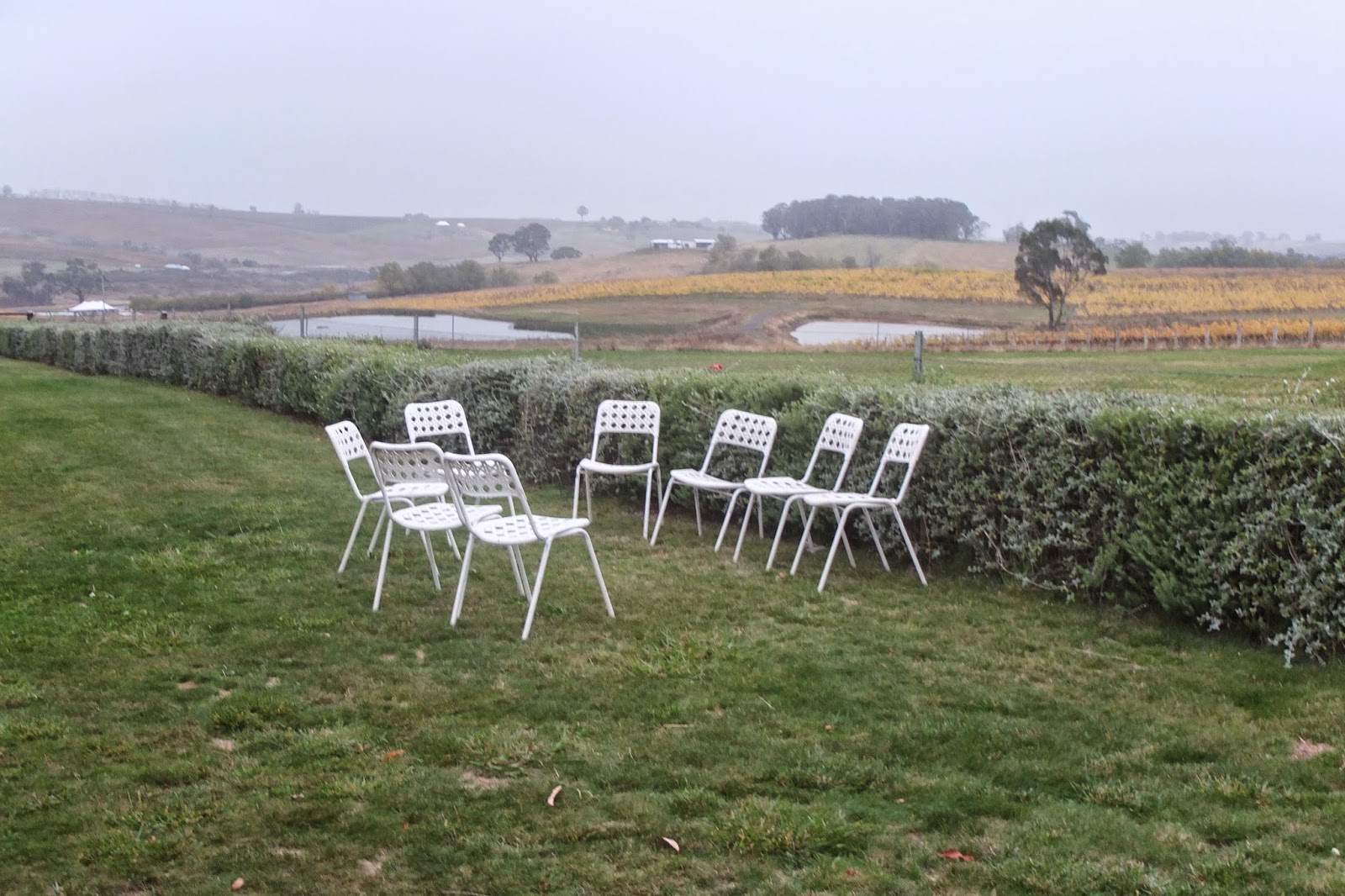I can't believe that Forage has been and gone for another year already. 2015 is the fifth Forage, a highlight of
FOOD Week in Orange. It's a totally great event, and we've had 4 years of fabulous, dry autumnal weather.
2011.
2012.
2013.
2014. Forage is bigger and better every year. 2015 was something special.
 |
Much rain was predicted this year.
90% chance of 10-20 mm. |
 |
And it started raining just as the first buses arrived!
But it was only a shower, and didn't last that long. |
 |
| The ladies were mostly kitted out in dress wellies anyway |
 |
Foragers are an intrepid lot and don't let a little shower
dampen their enthusiasm. |
 |
| The day was atmospheric and glorious. |
 |
| It's always wonderful walking between the vines |
 |
| With so many delicious pit stops along the way. |
 |
Stepping Stone's Minnestrone
with Trunkey Creek Spec |
 |
| The Forage ahead. |
 |
| Crowds of enthusiastic Foragers build with every bus arrival. |
 |
| I certainly did. |
 |
Sadly I wasn't drinking but did have the
occasional sip. |
 |
| Beautiful new vistas with every step. |
 |
Edwena Mitchell's
Beef Shin Braised in Coconut Cream
was sensational. |
 |
As was
Vindevie's
Hand Pressed Shiraz Sorbet |
 |
The rain had held off for long enough
and was soon bucketing down.
Most people had had enough wine that they didn't
really care. |
 |
| But now I long for a Gustav Klimt brolly too... |
 |
| It was a wet end to a great day. |
 |
But Kate Brack's
Chocolate and Red Wine Cake
with Roasted Pear and Cinnamon Cream
was Exceptional.
I didn't care that it was raining. |
And then a wet and soggy dash to the bus home. I can't wait to see what Forage 2016 will bring...
Edwena Mitchell published her marvellous beef shin recipe on Facebook and is happy for me to share it with you here. I think I need to try this at home. It would be easy to make a half recipe, although so delicious you'll probably want the full one.
The Braised Shin Beef was quite well received so herewith the recipe, adapted from a Gourmet Traveller Fare Exchange recipe:
2 kg shin beef, don't remove the casings, just cut it up into largish chunks
1 cup soy sauce
1/2 tab pepper
1/2 tab dark brown sugar
1 tab Herbies Chinese 5 Spice mix
1 or 2 green chillis
2" piece ginger grated
6 big fat cloves garlic
2 tabs sesame oil
800ml coconut cream
Make a paste with the pepper, sugar, spice mix, ginger, garlic, chilli & sesame oil, mix the paste with meat and soy sauce & marinate for as long as you can (at least 2 days).
Put the meat into good heavy casserole pot with coconut cream & cook at 140 degrees for 4 or 5 hours till very tender.
Serve with rice and:
2 green capsicum
1 Lebanese Cucumber
1/2 bunch radish
1 bunch shallots or 1 Spanish Onion
1/2 bunch coriander
1/2 cup sushi dressing
Slice capsicum, shallots & radish very finely, pour over sushi dressing 1/2 hr before serving & use Coriander for garnish at serving.
Serves 8 with a bit left over!!
For Forage, the meat was marinating in the soy & spice paste for one month, cryovac'ed, thanks to, Michael Borg from M & J Meats in Orange, my wonderful butcher.
Marinating for a month! No wonder it tasted so amazing. I might need a trip to see Michael this week too. It's been raining ever since Forage ended, and has turned quite wintery.
 |
Saturday Snapshot is a wonderful weekly meme
now hosted by WestMetroMommy |






































































